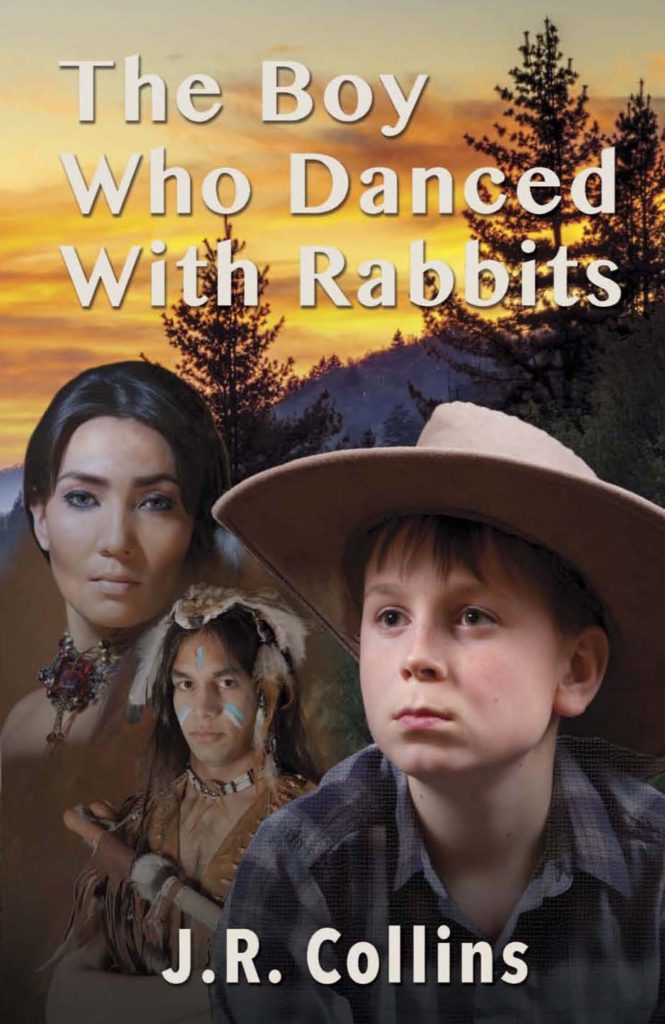Through This Window – Ethelene Dyer Jones – The Boy Who Danced with Rabbits by JR Collins (A Book Review)
“Choestoe.” “A Dancing Place of Rabbits.”
Each time I hear the musical word, “Choestoe” I think “home” and I grow nostalgic and filled with memories.
Pronounced Cho-e-sto-e (with long o and long e) it means home to me. The place where I was born. The valley and place with that musical name lies along the upper Notla (sometimes spelled Nottely) River “between the Blood and the Bald” (the highest and next to highest mountains in Georgia). A beautiful place, home to the 20th Century Georgia poet Byron Herbert Reece, whose poem “Choestoe” was published in The Prairie Schooner magazine, Spring, 1944, and helped to make our valley, the Cherokee-named “place where rabbits dance” known far beyond the peaceful valley many of us know as home.
Now, in 2016, a just-released book entitled The Boy Who Danced with Rabbits by J. R. Collins revisits in imagination that valley as it was when the first settlers came, while the Indians still lived there. J. R. Collins, known to me and other folks in Choestoe as Joe Collins, is of the same ancestral line as I am. We both descend from Thompson and Celia Self Collins, among the first settlers to Choestoe Valley. The Collins family was there when Union County was formed in 1832 from that great north Georgia portion of land designated “Cherokee.”
- R. Collins told stories to his children, Alex and Emma. And from their delight with his “tales of yore,” and with encouragement and enthusiasm from his wife, Colleen, Joe began to write these stories, one by one, using the vernacular language of the early settlers, much of which we who grew up in Choestoe heard in stories at our own parents’ knees.
The stories are told from the standpoint of the main character, Jebediah Collins (“Jeb” for short), who at age ninety remembers life as it was when he was young in Choestoe Valley. The author chooses to take the point of view of young Jeb. And from that standpoint, and with enthusiasm and a fluency of Appalachian speech, Jeb tells his stories. New author J. R. Collins acknowledges assistance from a fellow worker and journalism major, Shawn Jarrard, and from his agent Jeanie Loiacono of Loiacono Literary Agency, Irving, TX. The book was published by William Conner at W & B Publishers, Kernersville, NC. The book is available in print and kindle on Amazon. Joe Collins weaves the stories he himself told his children, Alex and Emma, into a novel.
Of course this review is prejudiced, because I like anything “Choestoe.” And if a writing comes from a kinsman, I am doubly proud that it could be about “our” place. In “about the author,” we are told that J. R. Collins is now working on a sequel to The Boy Who Danced with Rabbits, his second novel, with the title, Living in the Land Where Rabbits Dance.
- R. Collins makes no claim to being a writer. In fact, he was urged by others to “set down” his stories and then to compile them into some order that would produce a sequential story, a novel. Thus The Boy Who Danced with Rabbits was born.
Told from the standpoint of the young boy, Jeb, whose best friend is a Cherokee Indian boy his own age named Wolf, the story unfolds gently at first. But then the multiple hardships of life of the settlers to the Choestoe Valley unfold through the narrative, namely the “Thompie” Collins family (in real-life, actual settlers Thompson and Celia Self Collins, ancestors of both the author J. R. Collins and me). The settlers are friends to the Cherokee who still live in Choestoe Valley. They learn to communicate, to share knowledge of medicine and of how to “make-do” and live in the wilderness. Escapades of the two boys make life interesting. But responsibilities, which Jeb learns at an early age, are told with tenderness and insight throughout the novel. Hunting the forests for food, planting and harvesting crops from cleared patches, overcoming ravages of a tornado, and enjoying the festival of “Killing Time” (when the community came together to butcher hogs, calves, and goats and preserve them for food) are all a part of this story. When Jeb’s older brother is seriously injured in the storm, it takes a community to get him better. The Old Medicine Woman, a Cherokee neighbor, wields her wonder with herbal and other medicinal practices to help Cain through his long recovery.
I see a three-fold value in this novel by new author J. R. Collins. First, it gives from a young settler’s viewpoint information about how life was in the early 1830’s when self-preservation and living off the land was a way of life. It was “do or die,” and all worked hard to produce their part in the survival struggle. Second, the novel gives a look (though fictional, researched, and authentic) of friendly relationships between Cherokee and settlers, and how they helped each other before that dreadful edict, ‘The Trail of Tears’. And third, throughout the novel, Jeb’s strong faith in the Lord Jesus Christ is woven into his musings and his dialogue, revealing that both the settlers and the Indians (who already had influences from early missionaries to the Indians) trusted in the Great Spirit.
In his signed copy to me, author J. R. Collins wrote, “To Ethelene Dyer Jones, who has, all her life, danced with the rabbits in our beloved Choestoe!”
Congratulations, Joe Collins, on the advent of your notable book. I read it with joy, and with remembrance of similar stories that I heard as a child. Thank you for thus saving in printed form our noble heritage.
